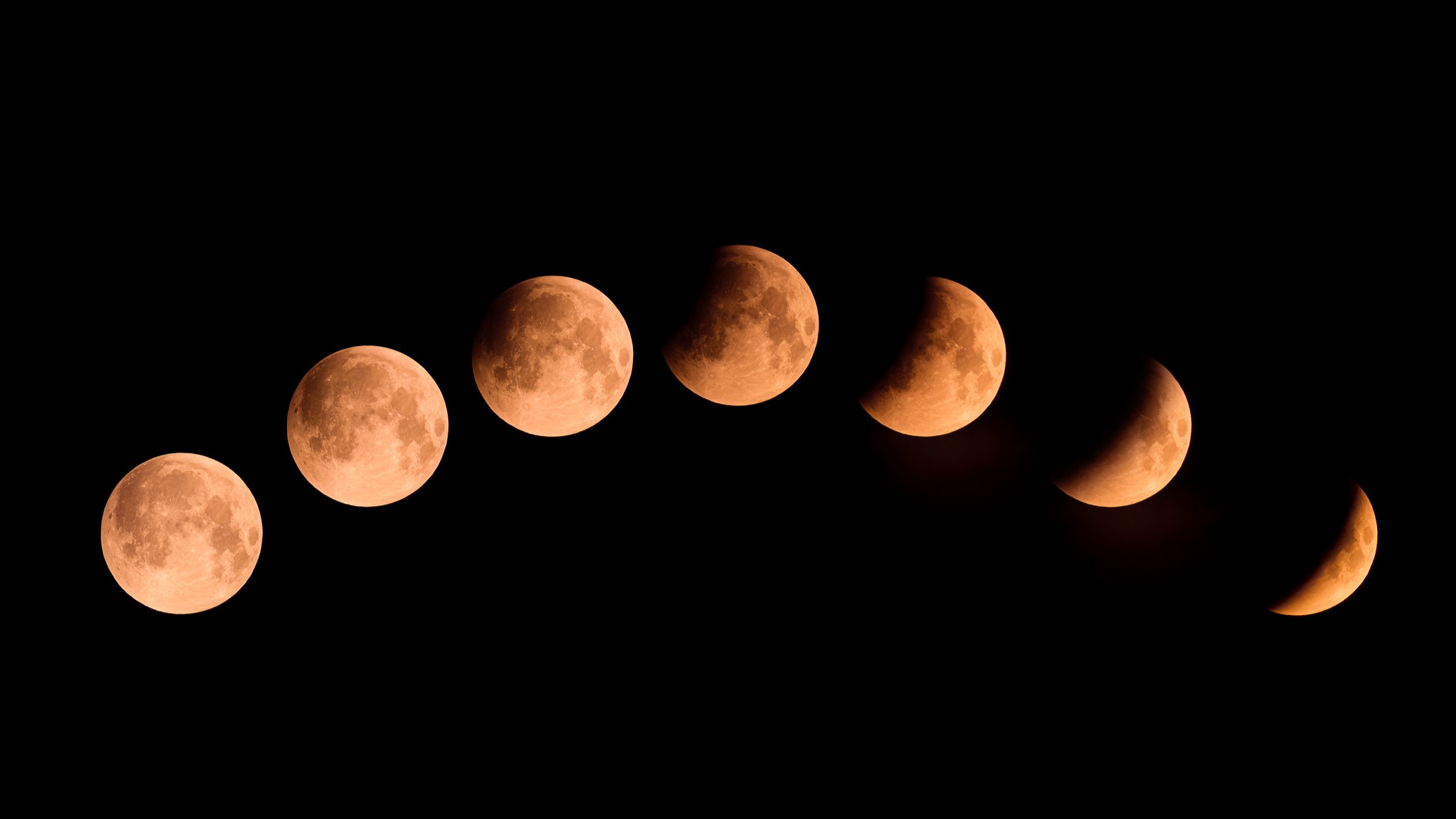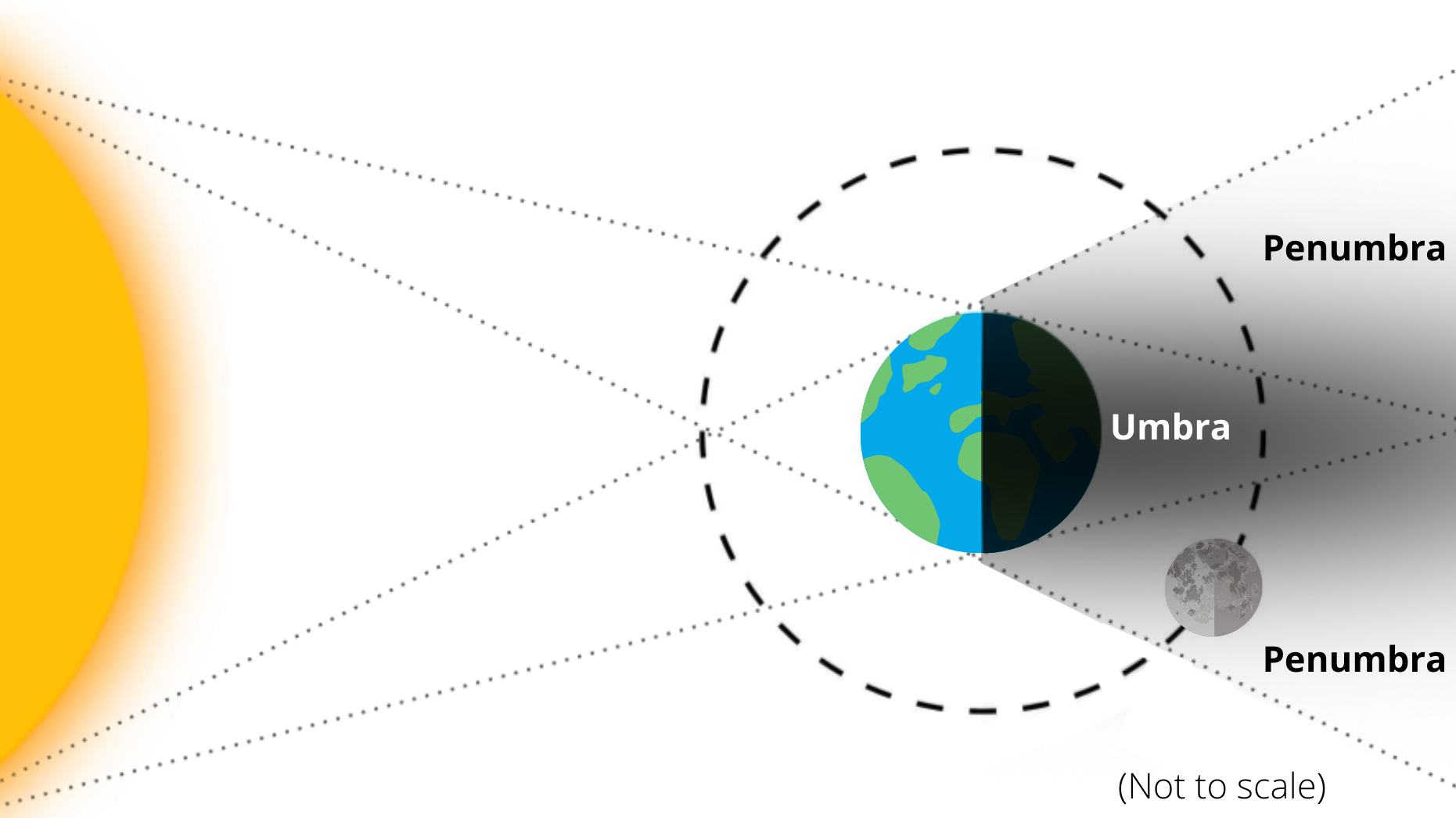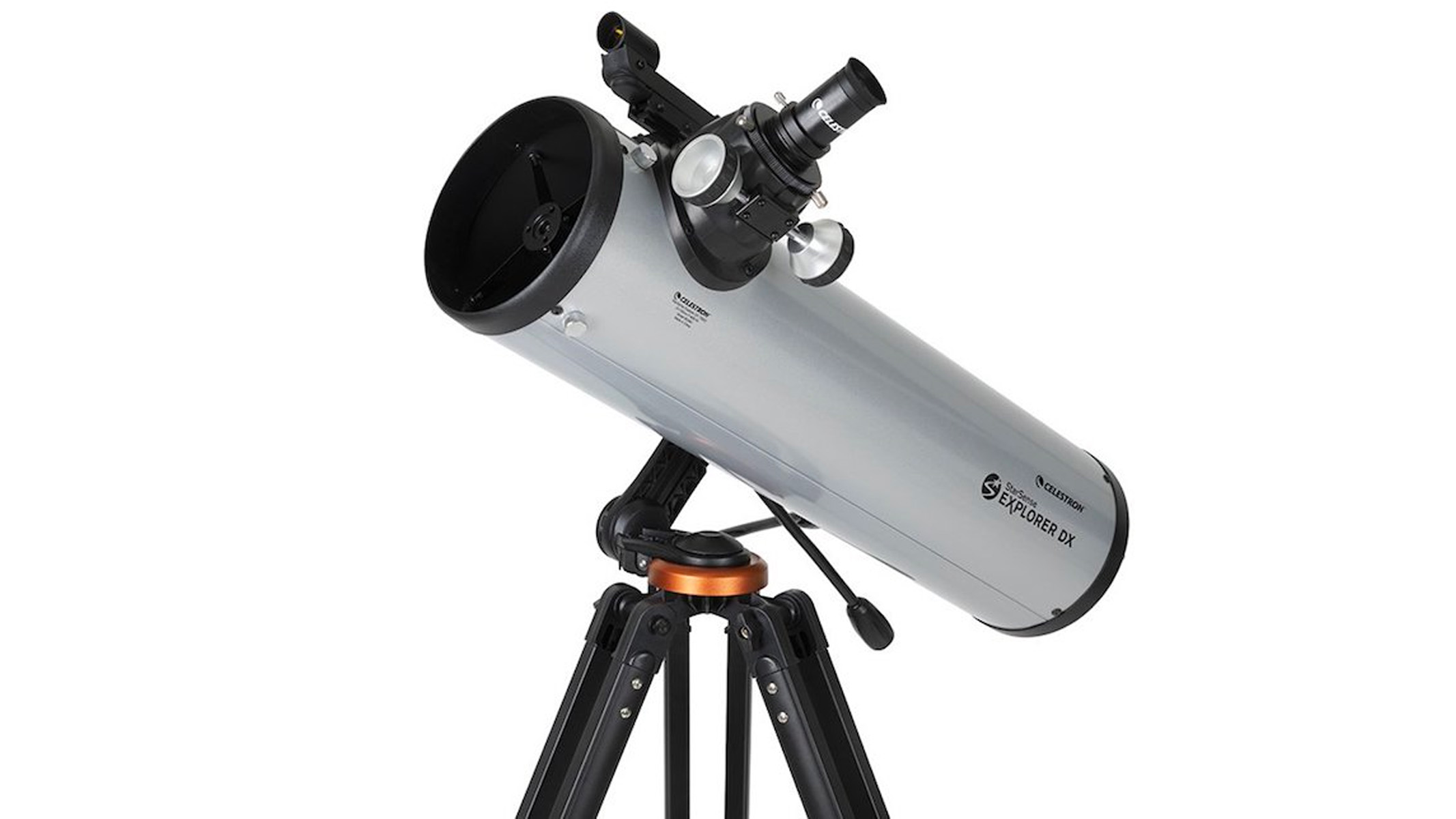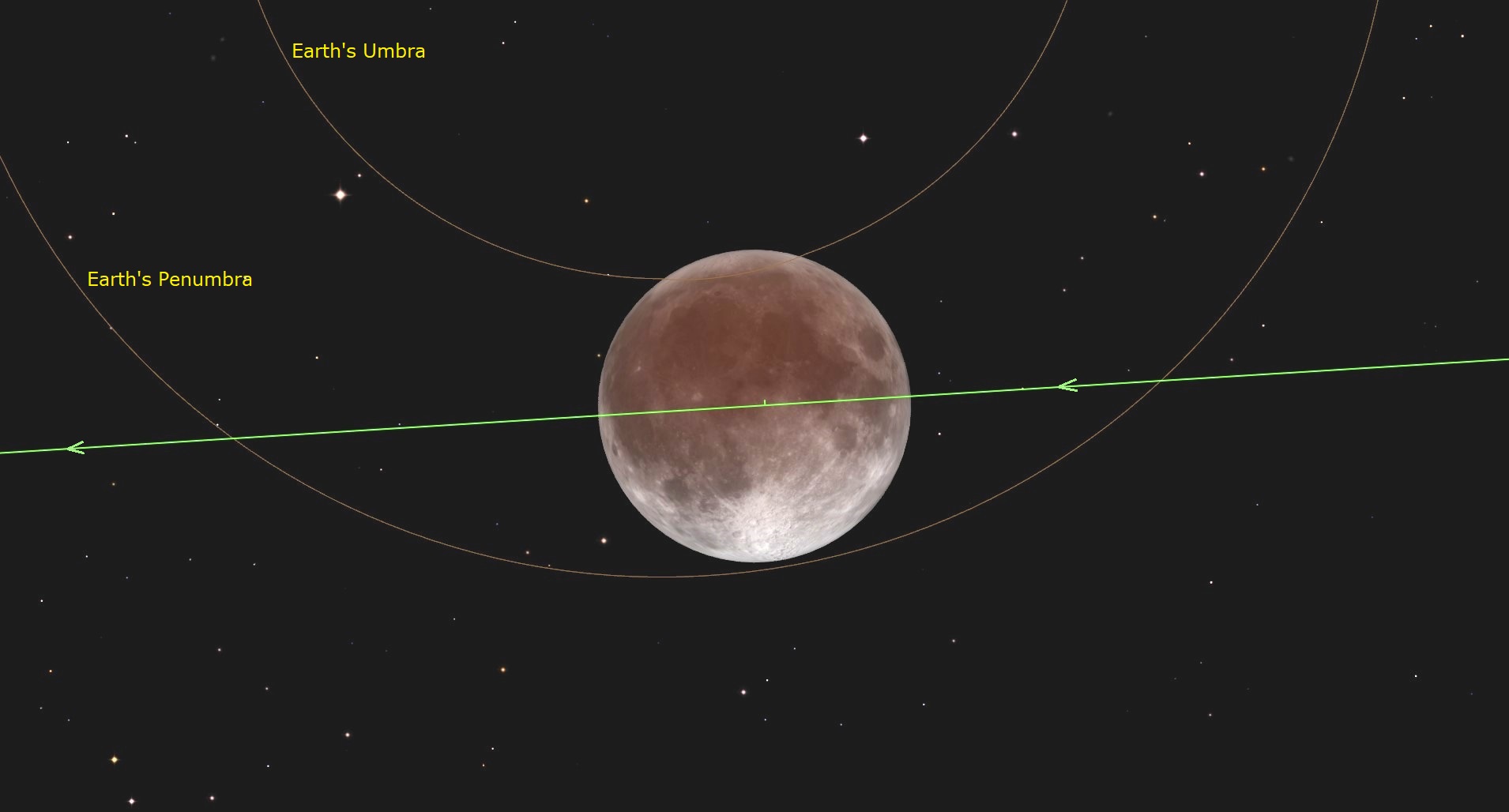
On the evening of Sept. 17, a partial lunar eclipse will turn the moon a murky red-brown color when Earth's shadow descends upon the lunar surface.
The partial lunar eclipse will be visible from most of North America, all of South America, Europe, all but the easternmost parts of Africa, western portions of Asia and Russia, and parts of Antarctica.
The exact timing of the partial lunar eclipse depends on your location and you can use websites like Timeanddate.com to find specific timings based on your location. For those in the U.S. Eastern Time Zone, the eclipse will reach its darkest phase, with the moon most obscured by Earth's umbra, at approximately 10:44 p.m. EDT on Sept. 17. In Europe and Africa, the eclipse will occur during the early morning hours of Sept. 18. In London, the peak of the eclipse will be visible around 3:45 a.m. BST on September 18.
If you are unable to watch the lunar eclipse in person you can watch all the action unfold online here on Space.com. We have rounded up several lunar eclipse livestreams that are showing the Super Harvest Moon on Sept. 17.
What causes a lunar eclipse?


Looking for a telescope for the moon? We recommend the Celestron StarSense Explorer DX 130AZ as the best for basic astrophotography in our best beginner's telescope guide.
In a partial lunar eclipse, only a portion of the moon passes into Earth's shadow, creating the appearance of a hazy "bite" taken out of the lunar surface. The shadow will darken the side of the moon facing Earth. The size of this "bite" is determined by the alignment of the sun, Earth, and moon.
About 3.5% of the moon's visible surface will be covered by the darkest part of Earth's shadow, the umbra. The rest of the Full Moon will take on a slightly reddish-brown appearance as the lighter portion of Earth's shadow which doesn't entirely block the sun's light will descend upon a majority of the lunar surface.
Super special eclipse

The partial lunar eclipse is extra special as it also falls during a "supermoon", the second of four supermoons in a row for 2024.
A supermoon happens when a full moon coincides with the moon's closest point to Earth in its orbit (which is elliptical-shaped). As a result, the moon appears slightly brighter and larger than usual, although the difference is subtle and hard to detect with the naked eye.
The term supermoon generally refers to a full moon within 90% of its closest approach to Earth. According to Fred Espanak, eclipse expert and retired NASA astrophysicist, there will be four supermoons in 2024, in August, September, October and November.
A lunar eclipse never comes alone
Approximately two weeks after the lunar eclipse Earth will experience an annular solar eclipse on Oct. 2. The dazzling "ring of fire" solar eclipse will be visible over parts of the Pacific Ocean, southern Chile and southern Argentina.
You can keep up with all the solar eclipse action with our solar eclipse live blog. We will also be streaming the eclipse live on Space.com, more details on how to watch online will be released closer to the time.
Editor's note: If you snap a great picture of the moon during September's partial lunar eclipse, and would like to share it with Space.com's readers, send your photo(s), comments, and your name and location to spacephotos@space.com.







